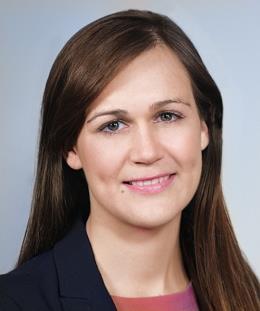Legal advice privilege: Court of Appeal holds dominant purpose test applies
07 February 2020

07 February 2020

Last week, the Court of Appeal handed down yet another important judgment on legal advice privilege (LAP).
LAP protects communications (whether written or oral) between a client and lawyer, made in confidence for the purpose of giving or obtaining legal advice (our emphasis).
In this case, the Court determined that it is necessary to apply a dominant purpose test when considering whether the purpose of a communication was to give or obtain legal advice, in order to determine whether LAP applies. Therefore, where there are two or more purposes for a communication, consideration will have to be given as to whether the dominant purpose is to give or obtain legal advice.
While a dominant purpose test is already applied in the context of determining whether litigation privilege applies to communications etc., this is the first time the Court has ruled that the dominant purpose test is also applicable when considering LAP. The Court saw no compelling reason to differentiate between the two limbs of privilege in this context and aligned English law with other common law jurisdictions, including Australia and Singapore, where it is well established that the dominant purpose test applies to LAP.
Although this judgment has helped clarify the position on LAP to some extent, the elephant in the room remains the Three Rivers (No 5) decision, which set a very narrow test for determining who the 'client' is in the context of LAP. Here, the Court was critical of this restrictive approach and indicated that, if it had been open to the Court to depart from Three Rivers (No 5), it would have done so.
Helpfully however, the Court reiterated the broad scope of what constitutes 'legal advice' (including "the giving of advice in a commercial context through a lawyer's eyes"), noting that the concept of the "continuum of communications" must be taken fully into account (i.e. communications that form part of a sequence of communications with the dominant purpose of instructing a lawyer).
The Court also considered LAP in the context of multi-addressee communications. From a practical perspective, this aspect of the judgment is likely to be of some importance. It is common for in-house lawyers to be copied into communications with non-lawyers from the business (as was the case here) and communications are often sent to external lawyers and other non-lawyers (such as financial advisers on a transaction) in a single multi-addressee email chain.
The Court applied a consistent approach to bilateral communications with lawyers - if the dominant purpose of the multi-addressee communication is to settle instructions to the lawyer, it will benefit from LAP (subject to the restrictions set out in Three Rivers (No 5) and the other elements of LAP as discussed above). However, where the dominant purpose of the multi-addressee communication is to seek commercial input from a non-lawyer or lawyer, then it will not attract LAP, even if a subsidiary purpose of the communication is to obtain legal advice.
As to whether multi-addressee communications should be considered as separate bilateral communications between the sender and each recipient, the Court's preferred view was that they should be so considered. LAP essentially attaches to communications. Where the purpose of the sender is simultaneously to obtain from various individuals both legal advice and non-legal advice/input, it was difficult to see why the form of the request (in a single, multi-addressee email on the one hand, or in separate emails on the other) in itself should be relevant as to whether the communications to the non-lawyers should be privileged. That was not to say, however, that the form may not in some cases reveal the true purpose of the communication, e.g. it may appear from the form of the email that the dominant purpose of the email is to settle the instructions to the lawyer, or on the contrary that the dominant purpose of sending the email to the non-lawyers is to obtain their substantive (non-lawyer) input.
The Court also indicated that there is some benefit in considering whether, if the email were sent to the lawyer alone, it would have been privileged. If no, then the question of whether any of the other emails are privileged hardly arises. If yes, then the question arises as to whether any of the emails to the non-lawyers are privileged, because (e.g.) its dominant purpose is to obtain instructions or disseminate legal advice.
Practically what is important here is that any legal advice that a lawyer gives in response to this non-privileged communication will benefit from LAP. The non-lawyer's response will not benefit from LAP, unless it refers to or comments on the lawyer's advice so as to portray the substance of that advice.
The Court added that where a communication might realistically disclose legal advice (in the sense of there being a realistic possibility of it disclosing such advice), then that communication will in any event be privileged.
Separately, but relevantly, the Court was asked whether emails and attachments should be considered separately for the purpose of determining whether each (or either) attract LAP. The Court noted that a non-privileged document does not become privileged just because it is sent to a lawyer. On this basis, the Court held that whilst an email and an attachment can be considered as a single communication, separate consideration will need to be given to each when considering whether LAP applies.
Some key takeaways:
Authors: Julia Petinos and Paul Ryan-Brown
Case Reference: The Civil Aviation Authority v Jet2.com Limited [2020] EWCA Civ 35
The information provided is not intended to be a comprehensive review of all developments in the law and practice, or to cover all aspects of those referred to.
Readers should take legal advice before applying it to specific issues or transactions.













Sign-up to select your areas of interest
Sign-up